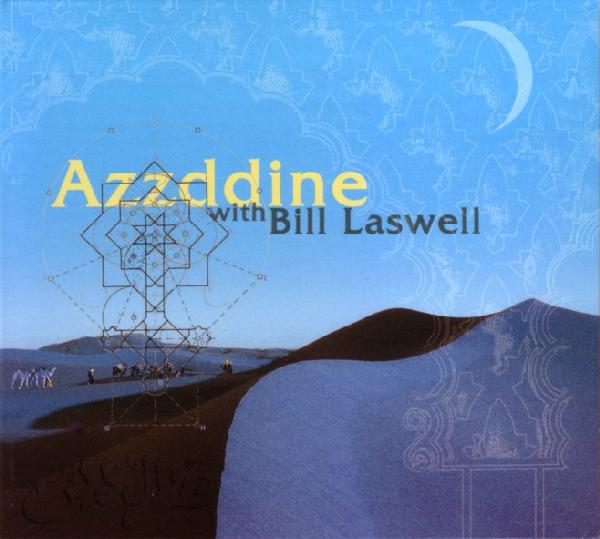AZZDDINE


1/ Srir F'Al Houbb (Ouhnine,Jabbar) 4.06
2/ Britou (Ouhnine,Jabbar) 3.46
3/ Ana Ou Enta (Ouhnine,Jabbar) 4.55
4/ Takassim (Ouhnine,Jabbar) 4.40
5/ Ah Ya Zamane (Ouhnine,Jabbar) 4.20
6/ Fine (Ouhnine,Jabbar) 3.18
7/ Al Mouktab (Ouhnine,Jabbar) 3.54
8/ Droub Al Lil (Ouhnine,Jabbar) 5.31
9/ Koun Shaqiqi (Ouhnine,Jabbar) 6.04
10/ Goa Rozali (Ouhnine,Jabbar) 4.28
11/ Rozali (Ouhnine,Jabbar) 3.44
12/ Jina (Ouhnine,Jabbar) 5.08
13/ Anta Fbali (Ouhnine,Jabbar) 5.11
14/ Ya Nass (Ouhnine,Jabbar) 4.00
Recorded at Sama Master, Casablanca, Orange Music, Orange, New Jersey
and Secret Laboratory, Basil
Engineer at Orange Music: Robert Musso
Mixed by Fido K and Pat Jabbar
Assistant at Orange Music: James Dellatacoma
Produced by Pat Jabbar
Mastered by Glenn Miller at Greenwood Studios, Ninningen
Azzddine Ouhnine: vocals, oud, darbukka; Najat: keyboards; Noura: background vocals; Naima: background vocals;
Orchestre Ouhnine: ensemble (6,12); Youssef El Majjad: voice (3); Boualem: rap (2); Abdelsalam Ouhnine: spiritual
assistance; Jalal Hamdaoui: programming; Bill Laswell: bass (1,2,3,5,7,8,9,14); Michel Laszlo: drums; Bombax:
programming, mix (10,13); Pat Jabbar: programming.
2004 - Barbarity (Switzerland), Barbarity 023 (CD)
Richie Unterberger (courtesy of the All Music Guide website)
The story of the genesis of this album is as interesting as the music itself, and the music is indeed so good and entrancing that it needs no backstory to make it an object of desire to lovers of great music.
Still, here goes: Apparently the record label received an "unlistenable" tape of a live show by congenitally blind oud player Azzddine Ouhnine of Rabat. Despite the tape's faults, the quality of the music convinced Barbarity that a record absolutely needed to be made. While waiting for their moment, Azzddine's "overmotivated" orchestra booked studio time and recorded numerous tracks, unfortunately so technically compromised that only two ultimately appear on Massafat. The rest of the tracks were assembled months later in Casablanca, using a five-man ensemble.
The piece-de-resistance, the producers believed, would be some fat, synthetic bass lines to fill out the bottom end, and given their previous contact with him, they humbly asked Bill Laswell in NYC if he would be willing to lay down a track or two. A week later, they received eight.
From the very first note, there is a special beauty which emerges in combining Moroccan stringed instruments and choral singing with the slight distortion of the vocoder, the smack of electronic percussion and other whimsical elements of computer programming. The album covers so many styles, ranges from traditional to a kind of Magrehbinian space age bachelor pad soundtrack, never fails to be less than entertaining from start to finish. And at the centre of it all (because the sheer mass of the music is daunting to the ears) is the calm melodic oud and vocals of Azzddine.
With swirls of singers both male and female, percussion and synth, some tracks are downright psychedelic. And others sound as traditional and as old as the Atlas Mountains themselves.
A triumph for production overseer Pat Jabbar - for immediately recognizing how important it was to record Azzddine, for "clothing" his music in the right sound, and for recruiting Bill Laswell.
Stephen Fruitman (courtesy of the Sonomu website)